Oral Vs Injectable Semaglutide
Are you worried about your weight and planning to lose some extra pounds? Then you should consult your doctor because there are a wide range of medicine options for weight loss with one of them being semaglutide.
Although it is marketed for managing symptoms of diabetes in recent years it has gained significant attention due to its ability to reduce weight. Do you know it is available in two forms- oral and injectable? Both of them have the same composition then why is one preferred over another?
Surely, this question comes to your mind when your physician prescribes this drug. To discover the answer to this question and to learn about the major differences between oral and injectable semaglutide, you’re invited to read this article. This article offers you a peek at semaglutide types, their benefits, key differences, and more.
1.What is semaglutide and its types?
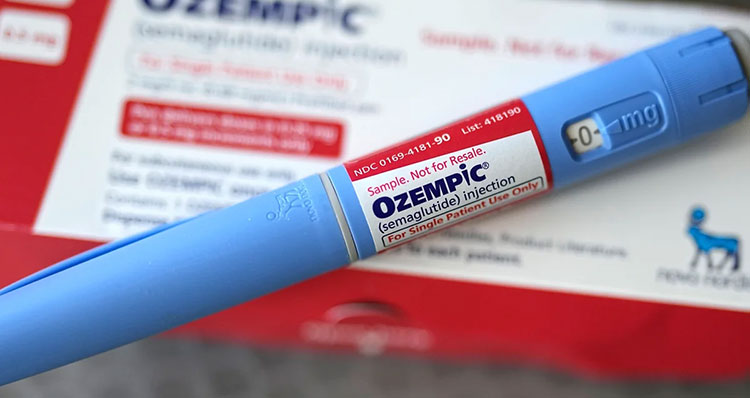
Semaglutide- Picture Courtesy: The Guardian
Semaglutide is a type of drug used for treating diabetes. However, it can be taken to decrease weight in overweight and obese people. This drug falls under the category of glucagon-like peptide-1 (GLP-1) receptor agonists, which means that this chemical aids in the treatment of type 2 diabetes by communicating the pancreas to create more insulin and decreasing sugar levels in the blood.
Additionally, you can take semaglutide for weight loss. It has the same working mechanism as that of the naturally occurring hormone GLP-1. It decreases the emptying of the stomach and boosts the feeling of fullness by regulating post-eating sugar levels.
Types of Semaglutide
You’ll find the semaglutide drug in two primary forms that are oral and injectable. All of them are manufactured by the same pharmaceutical firm Novo Nordisk and comprised of the same active ingredients.
As you would probably know these injections for their weight reduction effects. All three medications are FDA-approved as antidiabetic drugs and only one form of semaglutide has FDA approval for weight management. The others are prescribed by physicians as off-label for decreasing weight. They are not approved for treating overweight or obesity.
2.What are some benefits of semaglutide?
You would be aware of the importance of semaglutide for treating diabetes by regulating sugar levels in the bloodstream after reading the above section. And now you would be thinking are there any other uses of semaglutide besides being an antidiabetic drug?
So, to answer your question, some major benefits of semaglutide are stated below:
Management of Blood Sugar
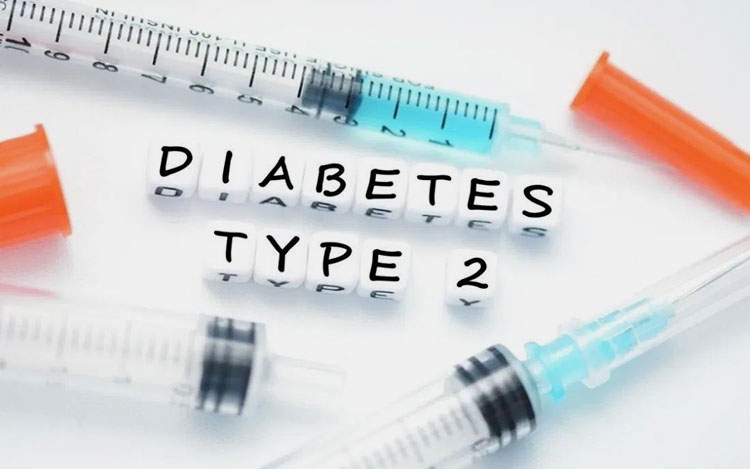
Management of Blood Sugar- Picture Courtesy: Patient Access and Affordability Project
As already discussed, the working action of semaglutide is similar to that of natural hormone GLP-1. Your body normally releases this hormone after you’ve taken a meal and manages sugar levels by inducing the release of insulin when you’ve high blood sugar after eating.
This inhibits glucagon hormone secretion- a hormone elevating sugar levels in the blood. Studies have demonstrated that semaglutide is very effective in lowering HbA1c levels. It decreases patient dependence on other diabetic medications.
Reduction in Weight

Reduction in Weight- Picture Courtesy: Wellness and Aesthetic
You must have read about the hype of semaglutide for weight loss. Ever wondered how is that possible? Semaglutide has the ability to suppress appetite and hunger by promoting the sensation of being full after eating. It acts on the hypothalamus in the brain. This center regulates appetite.
By taking this drug, you feel full for a longer time as it slows down gastric movements. It can also lower your food cravings, leading to a reduction in calorie intake. It is confirmed by studies that with semaglutide, you can lose about 10-15% of your weight. But the key is controlling your diet and making exercise part of your routine.
Healthy Heart

Healthy Heart- Picture Courtesy: Cottesloe Chiropractic
It may seem unbelievable but it holds true that semaglutide is one of the few antidiabetic drugs with the potential to boost heart health. A trial SUSTAIN conducted in 2016 revealed that semaglutide is linked with a decrease in major cardiovascular events (MACE) in diabetic people. MACE includes disorders like non-fatal heart attack, stroke, and cardiovascular death.
As it reduces weight, which ultimately improves heart health. Inflammation and oxidative stress- two major culprits of cardiovascular disorders- are decreased by semaglutide.
Similarly, diabetic individuals with high cholesterol levels also benefit from this product. You’ll notice this medication is more effective in decreasing the levels of bad cholesterol (LDL) and promoting the levels of good cholesterol (HDL).
Treatment Potential for Other Conditions

Suitable For Other Diseases- Picture Courtesy: Great Fall Clinic
Various drug trials and studies indicate that semaglutide holds a promise to treat other conditions beyond diabetes and weight loss. A phase 2 trial published in The Lancet, in 2021, shows that this drug can be used for reducing liver fat in Non-Alcoholic Fatty Liver Disease (NAFLD).
Women with Polycystic Ovary Syndrome (PCOS) could also benefit from semaglutide. You can have more stable hormonal function and enhanced insulin sensitivity. It can make your ovulation and menstrual cycle more regular, leading to better fertility outcomes.
Semaglutide also has a neuroprotective role and may counteract chronic inflammation and insulin resistance in people with Alzheimer’s and Parkinson’s disease. More studies are needed to discover the function of this product in delaying or decreasing cognitive deterioration.
3.Oral vs injectable semaglutide
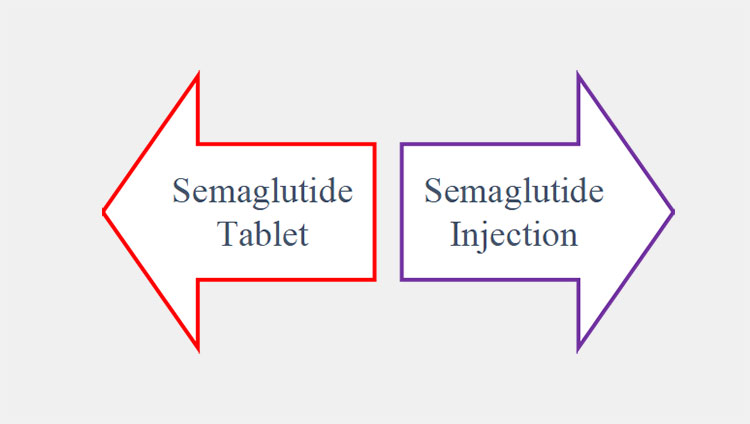
Oral vs injectable semaglutide
You surely would be curious to discover some primary differences between oral and injectable semaglutide. You’ll likely ask your doctor this question should you have semaglutide in tablet form or an injection if you’re prescribed this medication for controlling type 2 diabetes or weight decrease or both?
Usually, it comes to your personal preferences, your health condition, and your healthcare physician but to make the decision between oral and injectable semaglutide, it is essential to understand the differences between the two of them.
4.Absorption Dynamics
Absorption and bioavailability matter in the medication selection. Typically, patients and physicians prefer products with better absorption. Let’s compare the absorption dynamics of both oral and injectable semaglutide.
Oral Semaglutide: Less Absorption

Oral semaglutide- Picture Courtesy: The New York Times
As you take pills orally by mouth, they will have less absorption of ingredients. Why is that? The oral form of semaglutide is exposed to a variety of harsh conditions in the gastrointestinal tract, including stomach acidic and intestinal alkaline environments.
It is degraded by enzymes and has low permeability from the gastric system. This leads to poor absorption and in turn less bioavailability. The oral semaglutide has to wait for the disintegration of the outer coat of tablets then afterward its dissolution begins. Hence, it is absorbed more slowly.
So, you have to take more oral semaglutide to attain better treatment outcomes.
Injectable Semaglutide: Better Absorption
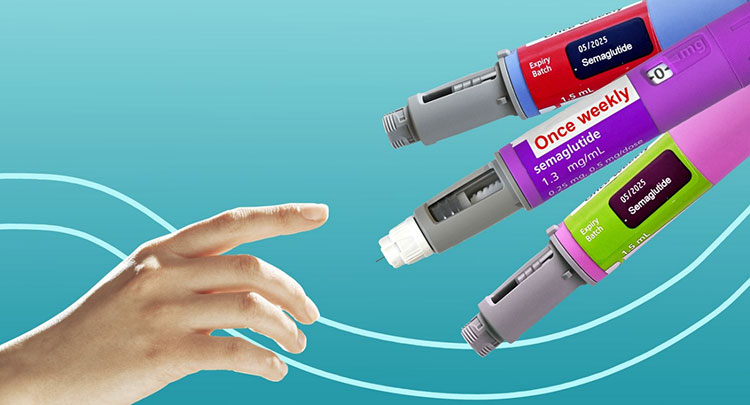
Better Absorption- Picture Courtesy: Verywellhealth
The thing that makes injectable semaglutide a well-liked treatment option is its higher absorption and more bioavailability. You inject it under the skin, which bypasses the harsh conditions of the digestive system and quickly enters blood circulation.
Since it is already formulated in dissolved form, thus there is no need for active ingredient dissolution, which is the prerequisite for oral semaglutide. It has more bioavailability because more amount of the drug enters the circulatory system. With injectable semaglutide, you’ll have a steady release of the drug and optimal long-term therapeutic outcomes.
5.Dosage Frequency
The oral and injectable semaglutide significantly differ in terms of their dosage frequency. Hence, the below section mentions this difference in detail.
Oral Semaglutide: Daily
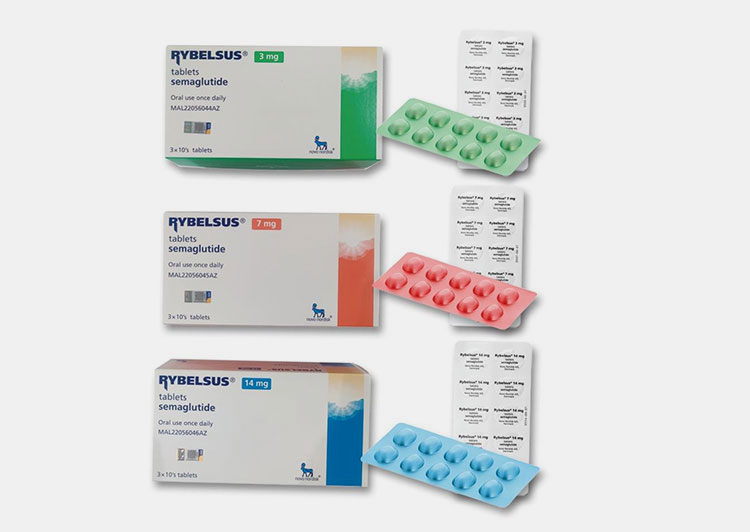
Oral Semaglutide- Picture Courtesy: MIMS
You will have to take the oral semaglutide daily to achieve consistency in blood semaglutide levels. As, its absorption is less, therefore, a daily dose of oral semaglutide is recommended by physicians to attain the desired glycemic control.
Oral semaglutide is available in 3, 7, and 14 mg doses in the market. Your physician may propose a lower dose (3 mg) once every day for the first 30 days, then you have to take 7 mg daily for 30 days if you require more blood sugar control.
Your dose may be increased to 14 mg daily after 1 month on 7 mg if you need additional sugar control. It may be noted that you should not take two 7 mg oral semaglutide to make its 14 mg dose.
Injectable Semaglutide: Once a Week
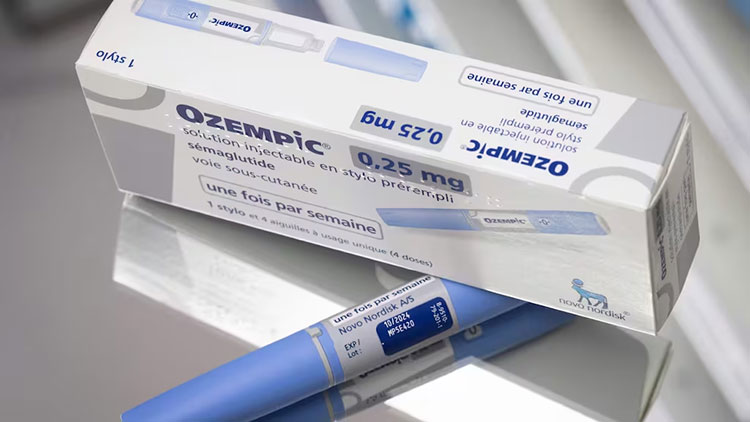
Injectable Semaglutide – Picture Courtesy: Radio Canada
Both injectable brands of semaglutide are administered once a week. One type of injectable semaglutide is prescribed for managing diabetes and is available in 0.25, 0.5, 1, or 2 mg doses. Its starting dose is 0.25 mg for 4 weeks and you may be given a maximum dose of 2 mg if the doctor thinks that you may benefit from additional glucose control.
In contrast, another type of injectable semaglutide formulation for weight control has dose strengths of 0.25, 0.5, 1, 1.7, and 2.4 mg pen. You may start on a 0.25 mg dose per week for weeks 1 to 4. Your physician may prescribe you a maintenance dose of 2.4 mg from week 17 and onwards.
However, if your physician sees that you’re unable to tolerate a 2.4 mg dose, then they may put you on 1.7 mg once weekly. But you should remember that 0.25, 0.5, and 1 mg for weight reduction are only starting doses and can’t give significant weight control outcomes.
6.Treatment Efficiency
Ever wondered about oral vs injectable semaglutide, which one is a better treatment option? They have both been examined for many years for their effectiveness.
Oral Semaglutide: Better For Managing Diabetes

Oral Semaglutide
Different studies have different outcomes when they conducted a comparison of oral vs injectable forms of semaglutide. One research review concluded that oral semaglutide is equally or more effective in lowering Hb1Ac, attaining blood sugar regulation, and decreasing weight than injectable semaglutide if the former is taken with insulin injection.
It also pointed out that oral semaglutide pills have a similar or more advantageous efficacy and safety profile when compared with injectable forms of GLP-1 agonists. Nevertheless, this study particularly looked at diabetic patients who are taking insulin, which could have impacted the study outcomes.
Injectable Semaglutide: Better For Weight Loss

Injectable Semaglutide- Picture Courtesy: Nature
In constating evidence, a study funded by Novo Nordisk in type 2 diabetes individuals concluded that by taking injectable semaglutide the participants lost an average of 10 pounds, whereas, the individuals on oral semaglutide experienced a weight loss of 8 pounds.
However, it is worth mentioning that in these trials, patients took smaller doses of Ozempic than those administered for managing obesity.
But you can’t get the whole story by simply comparing the clinical trials as the real-world experience of people on oral semaglutide or injectable semaglutide is quite different.
According to physicians, the patients who are recommended injectable form lose more weight than those on oral semaglutide.
7.Intake and Administration
The convenience of patients is very important when it comes to oral vs injectable semaglutide. Physicians always take into account your preference when prescribing these products. Let’s discuss how intake and administration of oral vs injectable semaglutide affects patient choice.
Oral Semaglutide: No Fear of Needles

Oral Semaglutide- Picture Courtesy: Revolve Medicare
This form of semaglutide is notably convenient in the sense that it is taken orally by mouth. Hence, it is best for individuals who have a phobia of needles and find injections painful. You simply have to ingest this pill with water without worrying about jabbing yourself with the needle.
It is more easy and less daunting for you if you aren’t at ease in injecting yourself. However, it should be noted that with a semaglutide pill, you’ve to follow a strict dosing schedule.
It is advised that patients should take this pill on an empty stomach before eating anything in the morning. And you have to swallow it with a tiny sip of plain water (typically four ounces or less) and no other liquid drink. After consuming this pill, you’ve to wait for the next 30 minutes before eating, drinking, or popping other pills.
Although this strict schedule is hard to manage, you’ll have better blood sugar levels and desired weight loss once you strictly follow it. But if you’ve to take other tablets or capsules on an empty stomach then you’ll have to ask your healthcare physician about this.
Injectable Semaglutide: No Strict Administration Schedule

Injectable Semaglutide- Picture Courtesy: GoodRx
Some people find it easy to receive an injectable semaglutide once a week. Because there is no need to keep track of meals. You can receive it with or without a meal. Moreover, you can have it any time of the day. But you’ve to receive it at the same time every week.
It is administered under the subcutaneous layer. Meaning that you’ve to inject it into the lining of fatty tissues present just below the skin. Only a few sites are used for subcutaneous semaglutide and they are abdomen, thighs, and upper arms. Don’t administer it into muscles or veins.
Here is an interesting fact for you: injectable semaglutide in the belly just a few inches above the belly button is significantly less painful than the ones administered in the thighs.
Even though you can use similar body areas as insulin, ensure there is adequate separation between these injection points. It is best to rotate your injection areas because otherwise, it could lead to tissue scarring.
8.Side Effects
Are you thinking about the side effects of oral and injectable semaglutide? These medications have almost similar adverse reaction profiles. Here are some of their common side effects side by side:
Oral Semaglutide: Gastrointestinal Issues

GIT Issues- Picture Courtesy: BMI Doctor
Although both semaglutide forms (oral and injectable) have the same potential risks- such as nausea, vomiting, diarrhea, stomach and abdominal discomfort, constipation, reduced appetite, frequent burping, heart burning, fatigue, and hypoglycemia- these risks are frequent with oral semaglutide.
The reason is very simple the pill form directly interacts with tissues of the digestive tract. Hence, individuals with sensitive digestive systems or gastric problems, find it easy to take injectable form as it is better tolerated by them.
Injectable Semaglutide: Quite Painful

Injectable Semaglutide- Picture Courtesy: Bounce Hydration
Gastrointestinal side effects are less intense with injectable semaglutide because it doesn’t go through the digestive tract. But the injectable semaglutide is very painful especially if you are receiving injections at the same site numerous times.
Its side effects are the same as those of other injections. And they can be minor but are hugely unpleasant to patients. Some frequent side effects are soreness, inflammation, redness, swelling, and prickliness.
Nevertheless, semaglutide forms have some rare side effects like acute pancreatitis. Also, some studies in rodents found a high risk of having a thyroid tumor on semaglutide therapy.
Conclusion
You may have heard about the increase in type 2 diabetes and obesity and seen the hype of semaglutide on your news feed. It can be thought of as a magic remedy because it is very effective for diabetes management as well as weight loss. But the good news is that you can have it in injectable form and you can also consume it orally. Hopefully, this blog post has answered your every query regarding oral vs injectable semaglutide. However, if you’ve still some unanswered questions, you’re always welcome to drop a message to AIPAK Engineering and we’ll respond to you immediately.
Don't forget to share this post!
CONTACT US
Tell us your raw material and project budget to get quotations within 24 hours.
WhatsApp Us: +86 181 7101 8586
 Tell us your material or budget, we'll reply you ASAP within 24 hours
Tell us your material or budget, we'll reply you ASAP within 24 hours
